
Worldcarblog.com
2024 Chevrolet Equinox EV
Although it wears the Equinox nameplate, the 2024 Chevrolet Equinox EV has little else in common with that compact SUV. The differences start with its powertrain, which swaps gasoline power for electrons. The Equinox EV's exterior styling blends futuristic touches with more traditional crossover design cues, and it looks pretty cool. The entry-level front-wheel-drive powertrain is 210 ponies strong and is said to provide around 250 miles of driving per charge. Unlike the smaller Bolt EUV, all-wheel drive is an option on the Equinox EV, and it gooses power to a perkier 290 horsepower. Uplevel models come with a larger battery pack that can extend the range to up to 300 miles, although opting for all-wheel drive reduces that estimate somewhat.
What's New for 2024?
The Equinox EV will be an all-new electric model when it joins the Chevrolet lineup in fall 2023 as a 2024 model.
We expect the Equinox EV to start at around $30,000 for the base 1LT model, but upgrading to the front-wheel-drive 2LT seems like the way to go. It adds a larger battery pack and carries a 300-mile estimated driving range, not to mention several additional features that most buyers will find desirable. Such items include heated front seats, an eight-way power-adjustable driver’s seat, fancier 19-inch wheels, and roof rails.
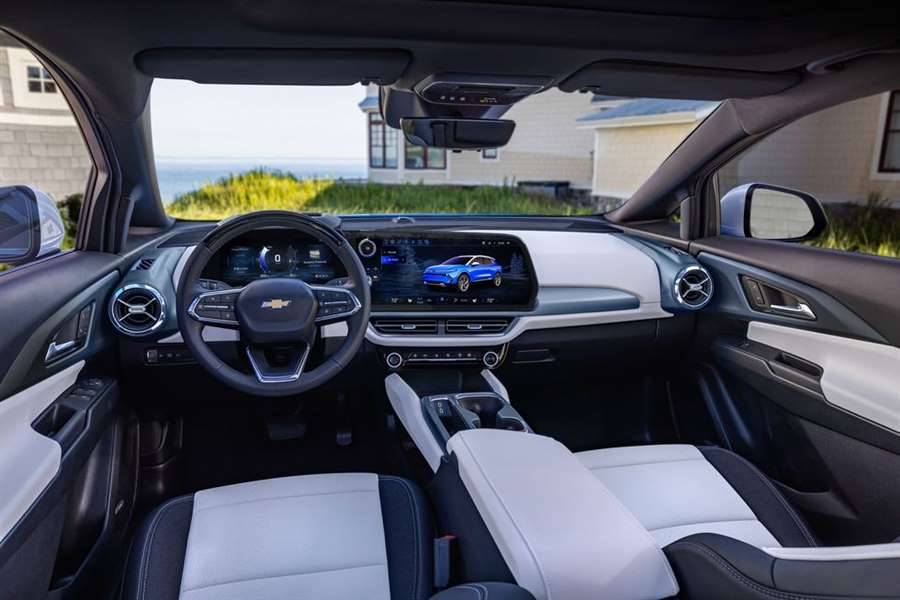
EV Motor, Power, and Performance
Front-wheel-drive Equinox EVs come with a single electric motor that makes 210 horsepower, but opting for the optional all-wheel-drive system ups power to 290 ponies. We haven’t driven the Equinox EV yet, but we’d wager that the front-wheel-drive powertrain will be enough for most drivers, especially given the immediate power delivery that’s typical of electric motors and will likely give the SUV a perky demeanor around town. The smaller Bolt EUV, for instance, makes 10 horsepower less from its single onboard motor but still managed a respectable 6.8-second run to 60 mph at our test track. When we get a chance, we’ll test both front- and all-wheel-drive versions of the Equinox and update this story with the results.
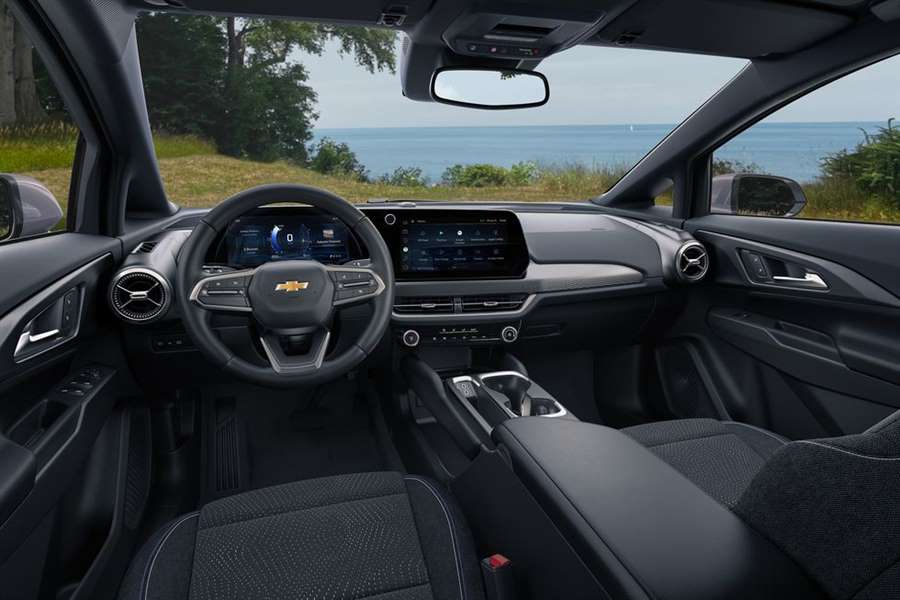
Range, Charging, and Battery Life
Base-level Equinox EV models come with a smaller battery pack than the rest of the lineup and carry a range estimate of 250 miles per charge. All others get a larger battery which can provide up to 300 miles of range, although going with all-wheel drive drops the estimated range down to 280 on those trims. All models come with DC fast-charging capability, and Chevrolet says that can add 70 miles of range to the battery in as little as 10 minutes.
Fuel Economy and Real-World MPGe
The EPA hasn’t released fuel economy ratings for the Equinox EV yet, and we don’t expect to have that information from the government until closer to the SUV’s launch. Once we get a chance, we’ll take the Equinox EV on our 75-mph highway fuel economy route to test its efficiency and range. For more information about the Equinox EV’s fuel economy, visit the EPA's website.
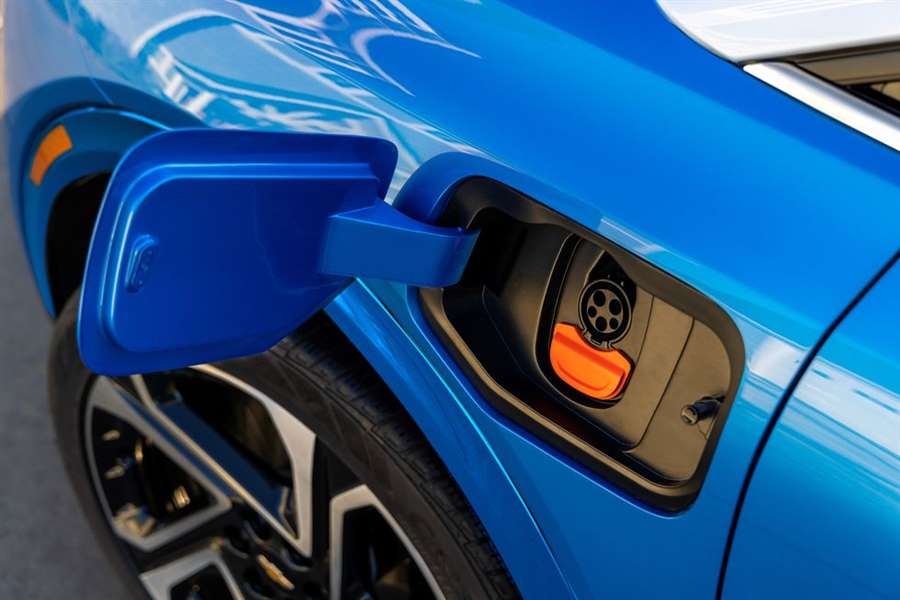
Interior, Comfort, and Cargo
Although the Equinox EV’s cargo capacity isn’t quite as capacious at 57 cubic feet with the rear seat stowed, the rest of the interior feels about as roomy as the gasoline-powered model. Inside, buyers will find a digital dashboard similar to that of the recently revealed Silverado EV and styling themes that mirror the Bolt EV hatchback and Bolt EUV crossover. Base models are fairly basic and lack even power-adjustable front seats, but moving up to the 2LT, 3LT, and RS trims unlocks plenty of features including heated seats, power seats, a sunroof, dual-zone climate control, and more. Opt for the 2RS and 3RS models and you can order the saucy Adrenaline Red interior theme.
Infotainment and Connectivity
Every Equinox EV comes with an 11.0-inch digital gauge display with a secondary touchscreen for infotainment. In the 1LT model, that infotainment display is 11.0 inches but a larger 17.0-inch screen is optional on 2LT and 2RS models and standard on the 3LT and 3RS. Chevrolet hasn’t released a full list of standard and optional features yet, but we expect to see wireless Apple CarPlay and Android Auto as standard across the lineup with uplevel models getting in-dash navigation and an onboard Wi-Fi hotspot.
Safety and Driver-Assistance Features
All models will ship with basic driver-assistance features as standard, including automated emergency braking, automatic high-beam headlamps, and lane-keeping assist. For buyers seeking the most up-to-date tech, the Equinox EV will be offered with GM’s Super Cruise hands-free driving system. For more information about the Equinox EV’s crash-test results, visit the National Highway Traffic Safety Administration (NHTSA) and Insurance Institute for Highway Safety (IIHS) websites. Key safety features include:
Standard automated emergency braking with pedestrian detection
Standard lane-departure warning with lane-keeping assist
Available adaptive cruise control with hands-free driving mode
Warranty and Maintenance Coverage
Chevrolet provides standard coverage limits for the Equinox EV’s electric powertrain components. It also includes the first maintenance visit, but overall coverage doesn't come close to that of the Hyundai Ioniq 5.
Limited warranty covers three years or 36,000 miles
Powertrain warranty covers five years or 60,000 miles
Complimentary maintenance covers one maintenance visit
Electric components are covered for eight years or 100,000 miles
Source: caranddriver.com
The Bugatti Centodieci is one of the most expensive cars in the world
Another Centodieci was produced, which means that the handover is ready.
We have no doubt that the future owner, despite being "shorter" by at least eight million, will sit down in this truly special car with a smile every time. A silver finish was chosen, and before leaving for its new owner, the car was photographed in the company of its ancestor, the legendary EB110 Supersport from 1992.
Only now, side by side, these two cars show aesthetic similarities. Of course, the decades-long time difference has taken its toll, but it would be difficult to single out a more attractive car here.
Let's remind, Supersport in translation means that it is slightly more powerful and lighter than the GT version, and it boasts of appropriate body modifications to achieve better aerodynamics.
It's powered by a 612bhp 3.5 V12 quad-turbo mated to a six-speed manual – impressive even today, let alone in the 1990s. It reached 100 km/h in a then incredible 3.2 seconds and a maximum of 355 km/h.
Centodieci offers a familiar story. 8.0 V16 with 1600 HP and dream performance. It does not stop until 380 km/h, and reaches 100 km/h in 2.4 seconds.
And finally, let's say that the original was produced in 30 copies, and on the used market it is still cheaper than the reincarnated model. Of the ten planned examples of the Centodieci model, only three have so far been seen in public.
The first, white version, was spotted in 2019, and the blue version only recently.
All ten cars will reportedly be completed by the end of the year.
The Brabus beast weighs three tons and reaches 100 km/h in 3.7 seconds
Brabus has a new toy for the rich that can be admired by all those who see sense in such exaggeration.
The Mercedes G-Class is one of the most luxurious SUVs in the world in its own right, which is hard to fault. For many, it is just a dream car, and to a lesser extent, just the basis from which to create a real dream car.
It is "especially difficult" for the latter, so Brabus will help them in their plans. Mercedes' tuning experts are particularly imaginative on the G-Class, so now they present another special version, limited to only ten examples.
The name says it all, so the Brabus P 900 Rocket Edition offers 900 hp, which represents far more dynamic performance than the lifted 800 Adventure XLP. Although it is lowered and adapted to the road, this model is still over two meters tall.
The body is decorated with an abundance of carbon, and the novelty in the offer is a transparent panel on the engine cover and LED lighting for literally everything. It is mounted on huge 24-inch rims.
Inside, the same story, but with an abundance of the finest leather. Rear passengers also get screens, and in addition to the ambient lighting, the Brabus logos are also illuminated. As we said, there are no off-road portal axles here, instead Brabus has opted for adjustable suspension for greater comfort and even better roadholding.
4.5 V8 biturbo The V8 produces the aforementioned 900 hp with an imposed torque limit of 1050 Nm. It reaches 100 km/h in an incredible 3.7 seconds, while the maximum is 280 km/h. We are talking about a 2.7 ton monster! Disc brakes with a diameter of 400 mm ensure a safe stop.
The Brabus P 900 Rocket Edition One of Ten is about 170,000 euros more expensive than the shorter version without the rear bunker, i.e. the starting price is 649,638 euros without tax.
Everyone wants a Ferrari Purosangue
According to reports from Italy, Ferrari has been swamped with orders for its €390,000 Purosangue crossover and could be forced to close its order book.
Unlike competing luxury brands whose SUVs often make up the lion's share of their sales, Ferrari has decided to limit production of its first crossover to no more than 20 percent of annual production in order to maintain exclusivity.
Even assuming that Ferrari's total production of all models rises to 15,000 with the addition of the new model line, that still only amounts to 3,000 cars per year. And that may not be nearly enough to keep up with demand, Jutarnji.hr states.
"We risk not being able to meet demand and may very soon have to close orders," said Ferrari's chief commercial and marketing officer, Enrico Galliera.
The Purosangue uses a naturally aspirated V12 under the hood, a feature that none of its performance-focused competitors offer, which may explain the rush of pre-orders. Galliera claims interest "exploded" when the company announced the Purosangue would use a V12.
Ferrari is likely to add smaller-capacity hybrid models later, borrowing either the hybrid V8 powertrain from the SF90 or the electrified V6 engine from the 296 GTB, whose 3.0-liter capacity would help avoid the heavy taxes imposed on big engines in China where the model is likely to be very popular.
Still, the V12 in the Purosangue is likely to be a big factor in convincing existing die-hard Ferrari owners that the Purosangue is worthy of wearing the Ferrari badge. Ferrari says it will prioritize delivery to current owners over buyers new to the marque.
"Every Ferrari owner wants to own a Purosangua and we have to reward them, because they are the ones who made Ferrari what it is today," Galliera told Automotive News Europe.
2024 Mercedes-AMG C63
The high-performance variant of Mercedes’s entry-luxury C-class sedan will return as the 2024 C63 S, but this time it will get a radically different engine. The previous generation was powered by a twin-turbo 4.0-liter V-8 with either 469 or 503 horsepower, but this new-generation C63 will be motivated by a gasoline engine half that size: a 2.0-liter turbocharged four-cylinder that combines with an electric motor to making a whopping 671 horsepower in total. The new hybrid setup promises to improve upon the previous C63’s great performance, though the engine’s character will no doubt change radically. To help mitigate turbo lag, the downsized engine uses an electrically powered turbocharger system related to the one found in Mercedes-AMG’s Formula 1 race car. The rest of the package will be heavily based on the new C-class that debuted for the 2022 model year but with racier styling and a spruced-up interior. Mercedes-AMG has also confirmed that the junior C43 model will also return to the lineup, but we review that model separately.
What's New for 2024?
The C63 is all new for the 2024 model year and, unlike last year, it will be offered solely as a sedan. We expect to see the 2024 C63 roll into Mercedes dealerships in the middle of 2023.
Mercedes-AMG hasn’t released pricing yet but we expect the C63 to follow the new trim levels that launched with the 2022 C-class, starting with the Premium base trim at around $85,000 and going up from there.
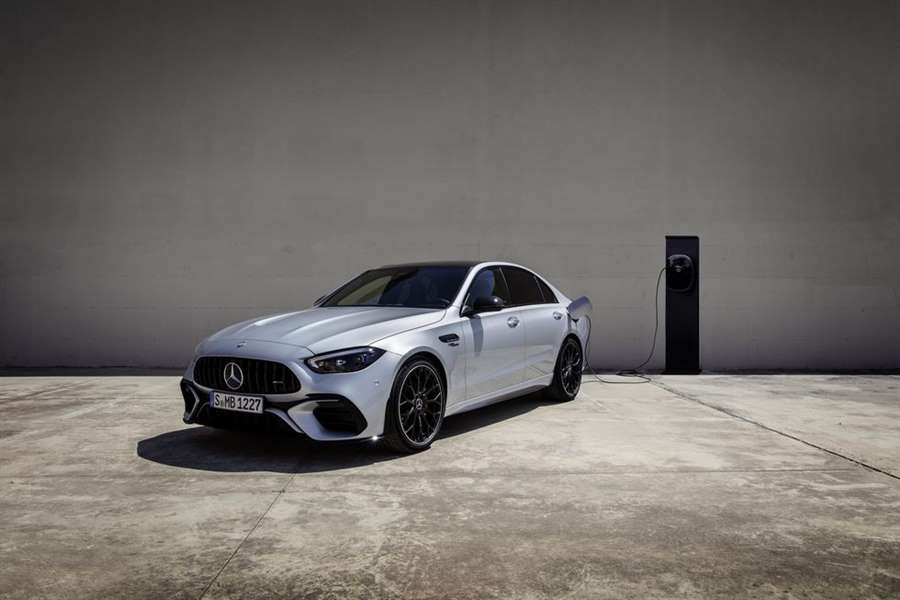
Engine, Transmission, and Performance
Gone is the old twin-turbo V-8 engine from the last-generation C63 and in its place is a turbocharged 2.0-liter four-cylinder. But before you get disappointed at an engine half the size of the old one, you should know that this inline-four will be augmented by a 201-hp electric motor and uses an electric turbocharger to reduce turbo lag. The new high-performance hybrid propulsion system will pump out a massive 671 horsepower, giving it an edge over rival to performance sedans such as the BMW M3 and the Cadillac CT4-V Blackwing, at least on paper. This setup allows for some limited all-electric driving, but only about 8 miles or so; its purpose instead is to provide similar performance to the outgoing car with better overall fuel economy. When we get a chance to test drive the new C63—which we are eager to do—we’ll update this story with driving impressions and test results.
The EPA hasn't released fuel economy figures for the 2024 C63 sedan yet. But due to the introduction of the downsized engine, we're expecting to see some fuel efficiency improvements over the outgoing model which was rated at 17 mpg city and 26 mpg highway. When we get a chance, we'll take the new C63 sedan on our 75-mph highway fuel-economy test route and update this story with its results. For more information about the C63’s fuel economy, visit the EPA's website.
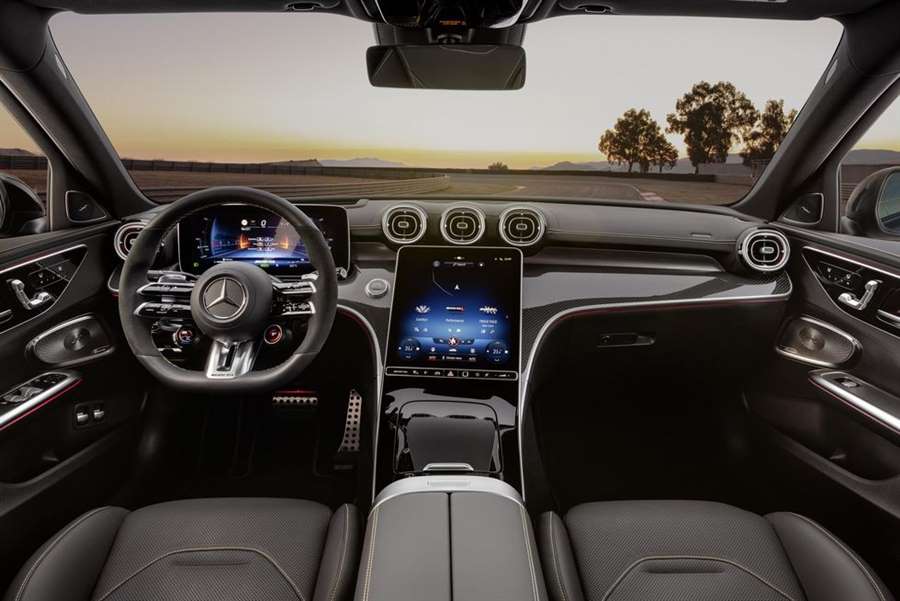
Interior, Comfort, and Cargo
The C63’s cabin looks much like the standard C-class and junior AMG C43 model, but it sports unique upholstery and stitching patterns as well as AMG-branded sport seats with openings cut out to help save weight. Mercedes hasn’t detailed every feature and option, but we expect to see plenty of luxury and convenience items available, including a panoramic sunroof, heated and cooled seats, four-zone automatic climate control, and more.
Infotainment and Connectivity
All models will likely come with the same large 11.9-inch infotainment touchscreen that is integrated into the center console and canted slightly toward the driver in the C43 model. A 12.3-inch digital gauge display will also likely be standard. Apple CarPlay and Android Auto should both be standard for wireless connectivity, and a high-end Burmester stereo system is expected to be available too.
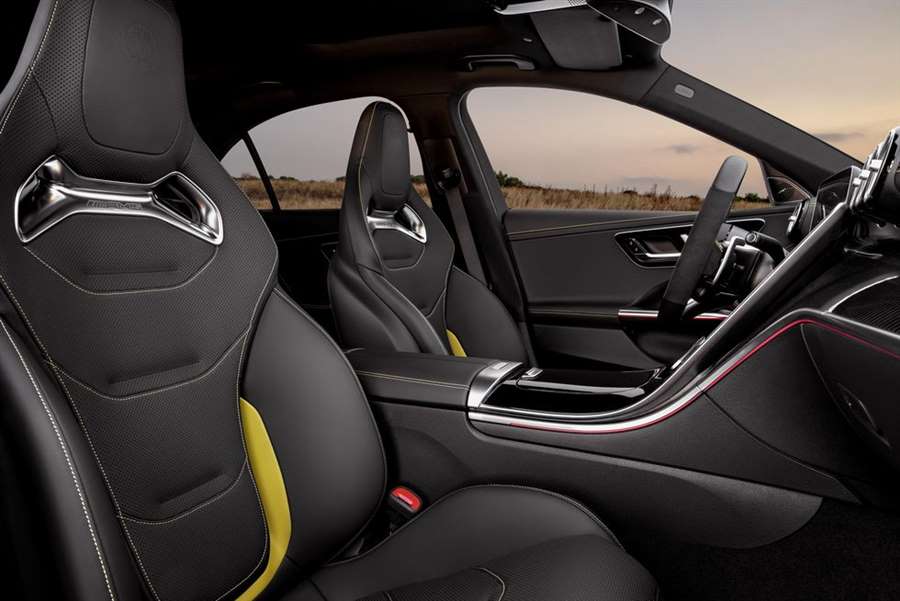
Safety and Driver-Assistance Features
Like the C43, the C63 will likely offer a host of standard driver-assistance features but unfortunately, the car's coolest tech, which includes an adaptive cruise-control system that utilizes navigation data to adjust the vehicle's speed for upcoming curves and roundabouts, will probably remain an optional upgrade. For more information about the C43's crash-test results, visit the National Highway Traffic Safety Administration (NHTSA) and Insurance Institute for Highway Safety (IIHS) websites. Key safety features are likely to include:
Warranty and Maintenance Coverage
Although rivals such as BMW, Genesis, and Volvo offer three years of complimentary maintenance, Mercedes-AMG omits that benefit from its standard warranty offerings. Otherwise, all new AMGs come with an industry-standard plan that covers most things for up to four years or 50,000 miles.
Limited warranty covers four years or 50,000 miles
Powertrain warranty covers four years or 50,000 miles
No complimentary scheduled maintenance
Source: caranddriver.com
How much cheaper were cars fifty years ago than they are today?
Everything is expensive today, we all know that. Many will say that we are in recession again or if we are not yet, we are on our way to being. Not only is the high price a stronger sensation, but salaries have more or less remained "frozen", at least that's what the Americans tell us.
It's probably the last country in the world that should be complaining about how "it's hard to live". However, even the Yankees recently made a comparison to show us how much cheaper life was exactly fifty years ago.
The cost of living jumped 9.1% between June and July this year, the biggest one-month increase in four decades. According to statistics prepared by colleagues from the MarketPlace website, currently 17% of young Americans still live with their parents, while in 1972 this was the case with only 8% of them.

The average price of a house five decades ago was 26,800 dollars (189,500 greenbacks in today's money value), while today it is 440,300 greenbacks. College prices are 120% higher, you need to spend the same amount more for annual vacations, and the most important part for our story is about the automotive industry.
Kelly Blue Book's source tells us that the current average selling price for a new four-wheeler is $48,200. There are several reasons for this, from shortages of computer chips due to which the demand is far greater than the supply, all the way to the information that customers mainly buy large pickup trucks, SUVs and crossovers.
But, fifty years ago, customers forked out an average of "only" 3,690 of the smallest greenbacks, which in today's money value is only about $26,100. It will come as a bit of a surprise to us that the Volkswagen "Beetle" was the best-selling car "across the pond" mentioned in 1972, and over 560,000 copies were delivered at a starting price of $1,780 (12,600 today's smallest greenbacks). Today, it's a Ford F Series that costs over $50,000 on average, so the difference is more than obvious.
The same source also compares the prices of certain models that were in production during both years, so for example the Toyota Corolla once cost $14,900 in today's money, while today it is $20,400. The situation is similar with the bulky SUV Chevrolet Suburban, whose value jumped from 26,600 to 56,500 of the smallest greenbacks.
Of course, there are huge differences between these vehicles and the modern ones are more powerful, better equipped, more economical and of course safer. So at the end of the day, this kind of comparison practically represents the addition of "grandmother and frog", but of course the public does not see it that way, but is guided by the theory that says that "the dollar had a much higher value in the past, compared to this one now".
2023 Toyota Sequoia Capstone First Test: Outstanding Numbers, But the Rest?
The new Sequoia is among the most statistically impressive three-rows on sale.
Pros
- Huge fuel economy gains
- Seriously improved towing capacity
- Thoughtful and easy third-row access
Cons
- Unsettled ride quality
- Interior quality fails to match the price tag
- Mushy brake pedal saps confidence
The oldest known specimen of Sequoiadendron giganteum lived for 3,266 years in the Converse Basin Grove of Giant Sequoia National Monument. That's about how long the second-generation Toyota Sequoia was on sale. OK, we're exaggerating slightly, but our first drive of the last Sequoia was published way back in November 2007, and the SUV stayed much the same during the following 15 model years that it was on sale. That is longer than double the lifecycle of most vehicles.
That SUV's age was apparent whether you looked at it, drove it, or touched it—in its sluggish transmission, ancient pre-Great-Recession-era design, pitiful fuel economy, and the generations-old switchgear and materials that littered the interior. The all-new Sequoia addresses all of those shortcomings and then some, and now that we've had a chance to stuff it full of testing equipment and spend more time behind the wheel following our first drive earlier this year, we can answer the big question: Is the Sequoia finally worth recommending to more than just the Toyota faithful?

So Long, V-8
Central to Toyota's reimagined Sequoia is its new powertrain. Gone is the 381-hp, 401-lb-ft V-8 that had been under its hood for a decade and a half. It is replaced by something thoroughly modern: a 3.4-liter (not 3.5, despite what Toyota will tell you) twin-turbo V-6 augmented by an electric motor, the same i-Force Max hybrid setup offered in range-topping Tundras. System output sums to 437 hp and a stump-pulling 583 lb-ft of torque, improvements of 56 hp and 182 lb-ft over the outgoing V-8. Toyota also swapped the old Sequoia's lazy dog of a six-speed for a new, of-this-era 10-speed automatic.
The results? All that extra torque means towing capacity increases by more than 2,000 pounds. The new Sequoia can now drag up to 9,520 pounds, which is at least 1,000 more than most SUVs in the full-size segment; only the 2023 Jeep Wagoneer with its new inline-six beats the Toyota.
As expected, the 2023 Sequoia is significantly quicker in a straight line than its predecessor, too. Our testing shows 0-60 mph in 5.6 seconds, more than half a second sooner than the quickest previous-gen model. The 2022 Ford Expedition's Stealth Performance package may beat it in a drag race, but so far this is the quickest full-size three-row we've ever tested.
The most significant improvement to this big SUV is its fuel economy. The old truck, with its thirsty old-school V-8 and outdated six-speed, was rated worst in its class at 13 mpg city and 17 mpg highway. With its standard hybrid twin-turbo V-6 and 4WD, the 2023 Sequoia is rated at 19/22 mpg on the same test cycles. That's significantly better than a comparable Chevrolet Tahoe, Ford Expedition, Nissan Armada, or GMC Yukon, and fractionally ahead of the aforementioned I-6 Wagoneer. Efficiency nuts will point out GM's diesel offerings fare better, but those SUVs can't match the Toyota's acceleration or towing capabilities.

This efficiency (relatively speaking) is all the more surprising given how, at nearly 6,200 pounds, the Toyota is among the heaviest we've tested in this space. If it doesn't impact fuel economy, it does ding the dynamics; Toyota's largest SUV stops from 60 mph in 134 feet. Among the 15 full-size SUVs we've tested over the past five model years, only two required a longer stopping distance.
Not Just The Numbers
Of course, the new Sequoia Capstone is more than its spec sheet, and spending more time with Toyota's answer to the Tahoe and Expedition exposes some unwelcome driving behaviors. There's a persistent jiggle emanating from the rear end. Even on flat roads, the live-rear-axle Sequoia never feels planted. And, yes, this is one of the few areas in which the new Sequoia lags behind its predecessor, which came with a then-unique independent rear suspension.
Driving anything other than straight, the Toyota behemoth embodies what senior editor Aaron Gold calls "big-car clumsy." Body roll is abundant in corners and the nose dives forward under braking. Multiple staffers also called out major shudders through the body structure when driving the Sequoia over washboard sections of an off-road course.
As for the new powerplant, we have mixed feedback. Drivetrain lash is evidenced by the vehicle clunking into gear, and associate online editor Alex Leanse points out that quick transitions from throttle to brake exposed hesitation in powertrain response.
The engine provides plenty of outright performance, which Gold describes as "like a V-8" but with "an invisible hand pushing the vehicle along." Credit the electric motor's torque fill. Some folks loved the hybrid twin-turbo V-6 but others noted inconsistent surges of power delivery. Toyota also makes this engine sound like a V-8, not with some clever exhaust geometry but by piping fake induction noise through the audio system. Call it disingenuous, but we're not mad about a little aural character even if it's artificial.

We have less kind words for the brake pedal. Leanse notes "a noticeable transition between regenerative and friction braking" and features editor Christian Seabaugh describes the feel as "mushy and Prius-like" to the point that it would ruin the towing experience.
Interior Insights
Beyond the driving experience, our test model came in Capstone guise, Toyota's new range-topping truck and SUV trim, which is positioned above the Platinum and TRD Pro. Our test vehicle rings in at $80,095, which makes this the most expensive offering in Toyota's lineup, in addition to landing within $8,000 of a base Lexus LX600. Keep in mind, the LX and Sequoia SUVs share their underpinnings and some mechanicals, though the Lexus is slightly smaller.
What's different? Outside, the Capstone gets giganteum 22-inch wheels (which exaggerate its jiggly ride), chrome accents, power running boards, and acoustically insulated front door glass over the Sequoia Platinum. The interior adds trim-specific semi-aniline leather upholstery, fake-looking open-pore American walnut trim, and ambient interior lighting to the panoramic glass roof and heated/ventilated first and second-row seats of the Platinum.
Editorial director Erik Johnson feels the interior materials are "decent for $60,000—not so much for $80,000" and notes uneven dashboard stitching and some chintzy-looking plastics, calling out the Capstone as a clearly dressed-up version of a more pedestrian family hauler. There is more frequent use of scratchy plastic the farther back you move in the vehicle, and the third row area is spartan.
The Sequoia's optional 14.0-inch touchscreen infotainment display (standard in Limited models and up) is a bright, responsive, generational leap over the aging 7.0-inch display in the outgoing Sequoia. Wireless smartphone mirroring and a plethora of camera feeds, including one from a 360-degree camera system, help bring the Sequoia into the present. That said, the system has no home screen or central hub outside of a thin, Apple dock-style strip of menu shortcuts flanking whatever menu is selected. Startup defaults to the navigation page which, unless you've paid for a subscription, mocks the driver with a blank screen.

Speaking of rear seating, the second-row captain's chairs are notably firm and mounted high, but both traits are in service to third-row access. Ingress requires only an easy pull of a lever mounted below the seat cushion near the door that results in the second-row seat folding in half and tilting way forward. It's effortless to reach the way-back, even for a small child. That's key, because cramped legroom and headroom mean you won't want full-size adults back there for long.
Closing Thoughts
The 2023 Toyota Sequoia represents an obvious improvement over its predecessor. This year's redesign addresses all of our qualms about that Jurassic-era SUV while also improving its towing numbers, modernizing the infotainment, including a full collection of driver-assist features as standard, and providing best-in-class accessibility to its third-row seating. Being dragged into the present isn't the same as jumping ahead of competitors, however. The Jeep Wagoneer offers a better standard powertrain, marginally higher towing capacity, superior driving dynamics, a nicer interior, and improved infotainment.
If you want a three-row Toyota that'll tow almost anything, the new Sequoia is your best bet. Even then, we'd recommend a Sequoia SR5 or Limited; those models sacrifice little in interior quality or features but deliver the same capability at a much more palatable price. Here's hoping it doesn't take 3,000 years for Toyota to make further improvements.
Source: motortrend.com

















